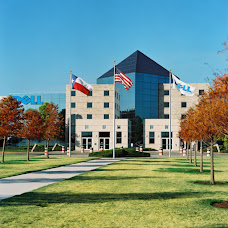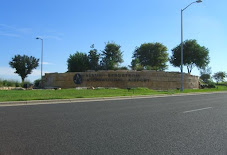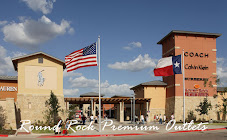Routing is the process of selecting paths in computer networking along which to send data or physical traffic. Routing is performed for many kinds of networks, including the telephone network, the Internet, and transport networks.
Routing directs forwarding, the passing of logically addressed packets from their source toward their ultimate destination through intermediary nodes; typically hardware devices called routers, bridges, gateways, firewalls, or switches. Ordinary computers with multiple network cards can also forward packets and perform routing, though with more limited performance. The routing process usually directs forwarding on the basis of routing tables which maintain a record of the routes to various network destinations. Thus constructing routing tables, which are held in the routers' memory, becomes very important for efficient routing.
Routers create broadcast domains. A network broadcast is a message that is sent to all hosts on a network. The reason for a broadcast is for a host on a network to retrieve information about an unknown host. Broadcasts can be necessary and useful tools for protocols on networks to enable data communication. The larger the number of hosts on a network, the more of a problem broadcasts become. More hosts equals more broadcasts equals more consumed bandwidth on the network. When these broadcasts are sent, the host that receive the broadcasts need to process them, and this processing takes away valuable time from performing other important network functions. Broadcasts are contained within networks by the Router, these networks are know as Broadcast Domains.
Routing, in a more narrow sense of the term, is often contrasted with bridging in its assumption that network addresses are structured and that similar addresses imply proximity within the network. Because structured addresses allow a single routing table entry to represent the route to a group of devices, structured addressing (routing, in the narrow sense) outperforms unstructured addressing (bridging) in large networks, and has become the dominant form of addressing on the Internet, though bridging is still widely used, albeit within localized environments.
Distance-vector routing protocol (are simple and efficient in small networks - EIGRP)
Distance vector algorithms use the Bellman-Ford algorithm. This approach assigns a number, the cost, to each of the links between each node in the network. Nodes will send information from point A to point B via the path that results in the lowest total cost (i.e. the sum of the costs of the links between the nodes used).
The algorithm operates in a very simple manner. When a node first starts, it only knows of its immediate neighbours, and the direct cost involved in reaching them. (This information, the list of destinations, the total cost to each, and the next hop to send data to get there, makes up the routing table, or distance table.) Each node, on a regular basis, sends to each neighbour its own current idea of the total cost to get to all the destinations it knows of. The neighbouring node(s) examine this information, and compare it to what they already 'know'; anything which represents an improvement on what they already have, they insert in their own routing table(s). Over time, all the nodes in the network will discover the best next hop for all destinations, and the best total cost.
When one of the nodes involved goes down, those nodes which used it as their next hop for certain destinations discard those entries, and create new routing-table information. They then pass this information to all adjacent nodes, which then repeat the process. Eventually all the nodes in the network receive the updated information, and will then discover new paths to all the destinations which they can still "reach".
Link-state routing protocol (OSPF, IS-IS)
When applying link-state algorithms, each node uses as its fundamental data a map of the network in the form of a graph. To produce this, each node floods the entire network with information about what other nodes it can connect to, and each node then independently assembles this information into a map. Using this map, each router then independently determines the least-cost path from itself to every other node using a standard shortest paths algorithm such as Dijkstra's algorithm. The result is a tree rooted at the current node such that the path through the tree from the root to any other node is the least-cost path to that node. This tree then serves to construct the routing table, which specifies the best next hop to get from the current node to any other node.
Path selection
A routing metric is a value used by a routing algorithm to determine whether one route should perform better than another. Metrics can cover such information as bandwidth, delay, hop count, path cost, load, MTU, reliability, and communication cost (see e.g. this survey for a list of proposed routing metrics). The routing table stores only the best possible routes, while link-state or topological databases may store all other information as well.
As a routing metric is specific to a given routing protocol, multi-protocol routers must use some external heuristic in order to select between routes learned from different routing protocols. Cisco's routers, for example, attribute a value known as the administrative distance to each route, where smaller administrative distances indicate routes learned from a supposedly more reliable protocol.
A local network administrator, in special cases, can setup host-specific routes to a particular machine which provides more control over network usage, permits testing and better overall security. This can come in handy when required to debug network connections or routing tables.
Tuesday, March 18, 2008
Subscribe to:
Post Comments (Atom)
beach

cottesloe beach restaurant
City of Perth

view from King's park
Houston TX

San antonio


















No comments:
Post a Comment